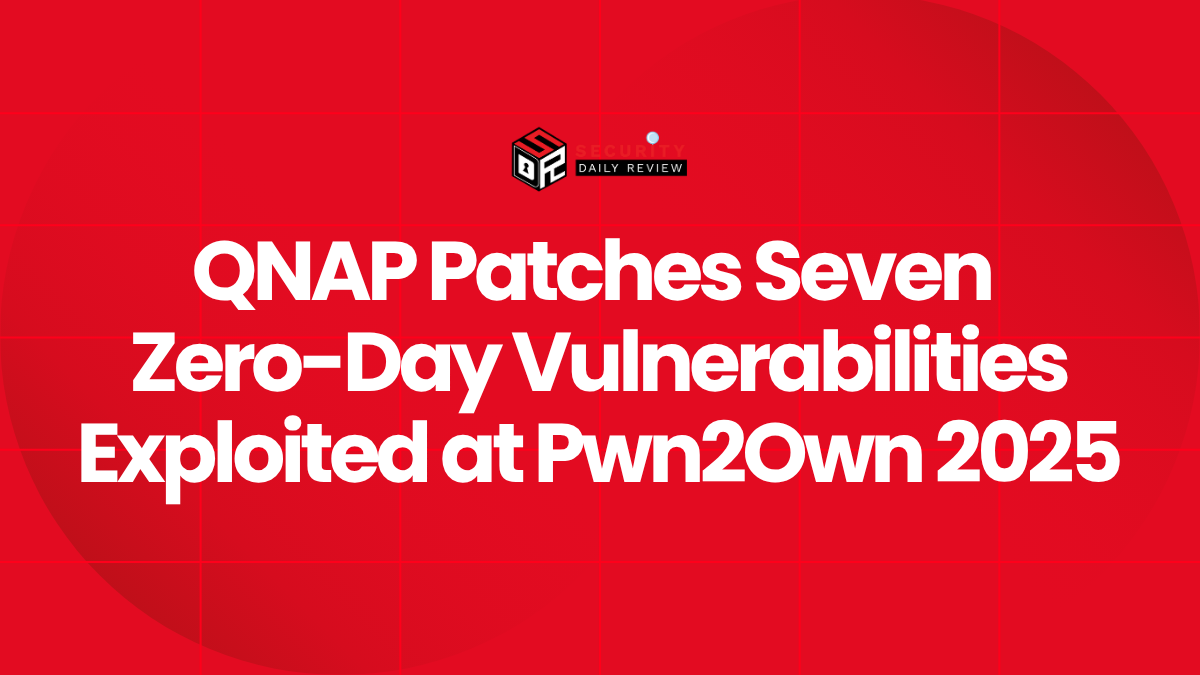Taiwanese network-attached storage (NAS) vendor QNAP has issued patches for a set of seven zero-day vulnerabilities following their exploitation at the Pwn2Own 2025 security competition held in Ireland. The flaws impacted several widely deployed QNAP products, including QTS, QuTS hero, Hyper Data Protector, Malware Remover, and HBS 3 (Hybrid Backup Sync). This latest batch of critical security fixes underscores growing concerns over the exposure of NAS devices to advanced persistent threats and emphasizes the importance of proactive vulnerability management.
Security Flaws Were Revealed by Researchers at Pwn2Own
The zero-day vulnerabilities were disclosed during the Pwn2Own 2025 event, where security researchers demonstrated novel exploit chains targeting QNAP’s software stack. The competition offers significant cash prizes for identifying previously unknown flaws, incentivizing vulnerability research by responsible parties. In this case, QNAP acted swiftly following the event, issuing security updates across affected platforms.
Wide Attack Surface from Multiple High-Value Applications
The vulnerable components include core QNAP systems and ancillary utilities that are popular in enterprise environments:
- QTS and QuTS hero – Primary Linux-based operating systems running on QNAP NAS hardware
- Hyper Data Protector – Backup software for VMware and other virtual environments
- Malware Remover – Security utility used to detect and eradicate malware from QNAP storage
- HBS 3 Hybrid Backup Sync – Data backup and synchronization tool with cloud integration features
By targeting such a diverse set of applications, the exploit demonstrations at Pwn2Own illustrated the breadth of possible attack surfaces within the QNAP software ecosystem.
Risk Posed by the Zero-Day Exploits and Their Potential for Abuse
Security vulnerabilities in NAS appliances can have far-reaching implications. These devices are often exposed to the internet and contain sensitive data, backing up everything from personal files to corporate databases. The availability of zero-day exploits for NAS platforms represents a particularly severe risk because:
- Zero-days are exploitable before the vendor becomes aware of the flaws.
- NAS appliances, especially in small and medium enterprises, often lag in patch currency.
- Attackers can leverage vulnerabilities in backup or malware remediation tools to elevate privileges or bypass security controls.
If successfully weaponized, the vulnerabilities discovered in QNAP software could be used to achieve remote code execution, trigger privilege escalation, or disrupt backup processes—all with potentially catastrophic results to data integrity and availability.
QNAP Responds Quickly but Urges Customers to Update Immediately
In response to the disclosed vulnerabilities, QNAP coordinated rapid internal reviews and issued patched firmware updates and application revisions. A company spokesperson emphasized that no active exploitation in the wild has been observed as of the disclosure, though the risks from delayed patching remain significant.
QNAP users are advised to:
- Update QTS or QuTS hero to the latest available versions
- Apply the latest version of Hyper Data Protector, Malware Remover, and HBS 3
- Disable remote management features if not in use
- Monitor system logs for irregular access patterns
As part of their standard disclosure response, QNAP has also published [security advisories](source ) detailing the CVEs and affected versions, providing hashes and update versions to help administrators validate patches.
Broader Industry Impact and Takeaways for Security Teams
The QNAP disclosure is the latest example of how competitive vulnerability research conferences such as Pwn2Own can serve as valuable early warning systems for the security community. These events often surface critical vulnerabilities before malicious actors can independently discover and exploit them.
From a defensive perspective, the incident offers the following lessons:
- NAS and backup infrastructure are increasingly popular cyberattack targets
- Zero-day vulnerabilities in auxiliary tools like backup software are just as critical to patch as OS-level flaws
- Regular participation in initiatives like Pwn2Own reflects positively on vendor maturity and transparency
As attackers continue targeting essential infrastructure software, the patching of these QNAP vulnerabilities serves as a reminder for all enterprises to prioritize security hygiene and adopt robust monitoring of backup and storage systems.
“The Pwn2Own revelations reaffirm that backup and malware protection layers cannot be assumed secure by default,” said a security analyst familiar with the event. “Patching these rapidly is not optional—it’s essential.”
With threat actors expanding their techniques and shifting tactics to exploit non-traditional vectors like backup utilities and NAS appliances, events such as Pwn2Own 2025 remain instrumental in reinforcing the ecosystem’s security fidelity before real-world damage occurs.









